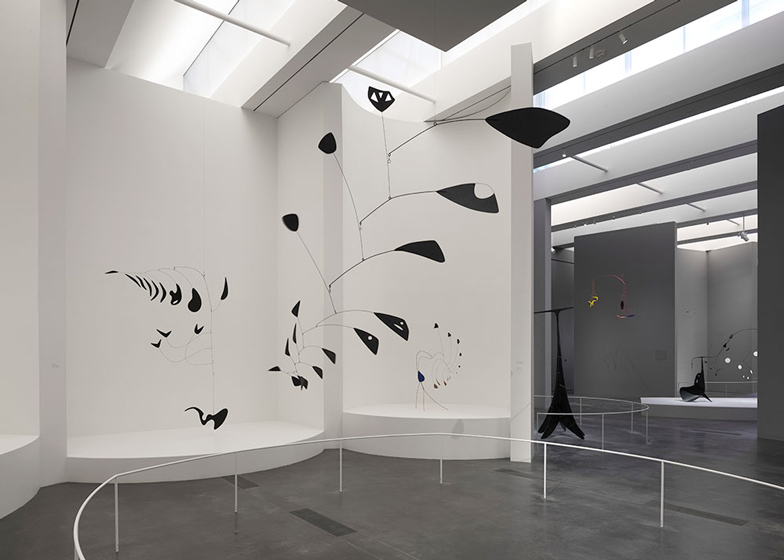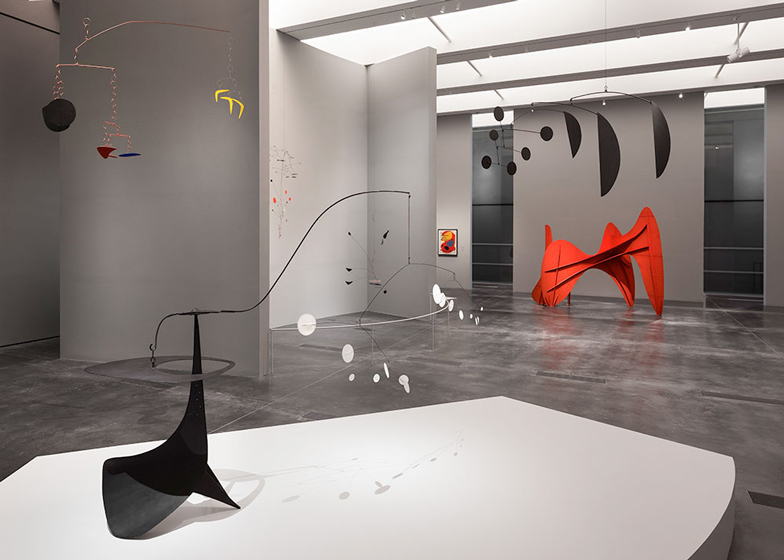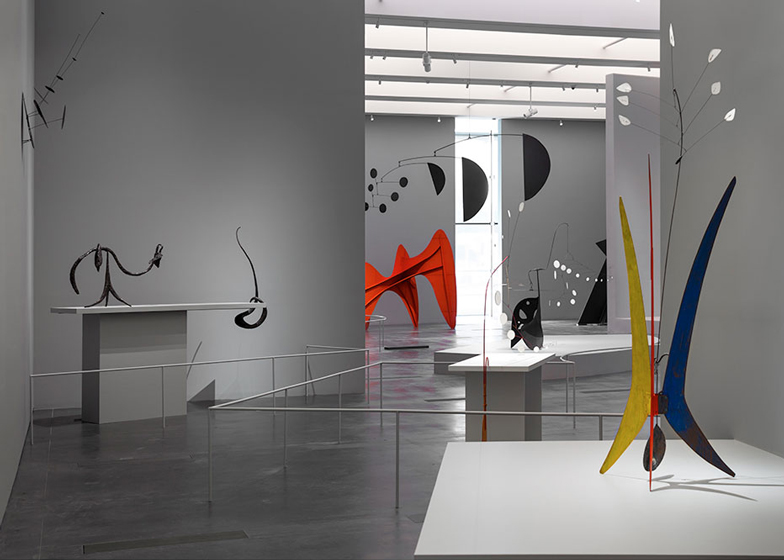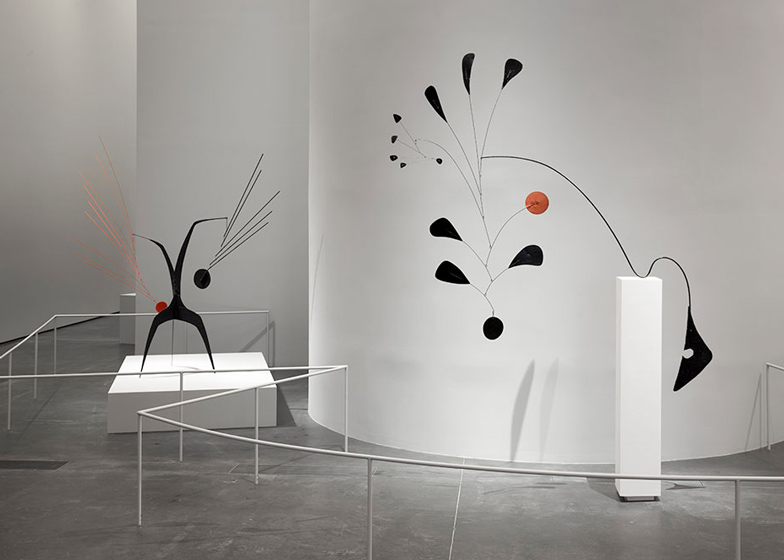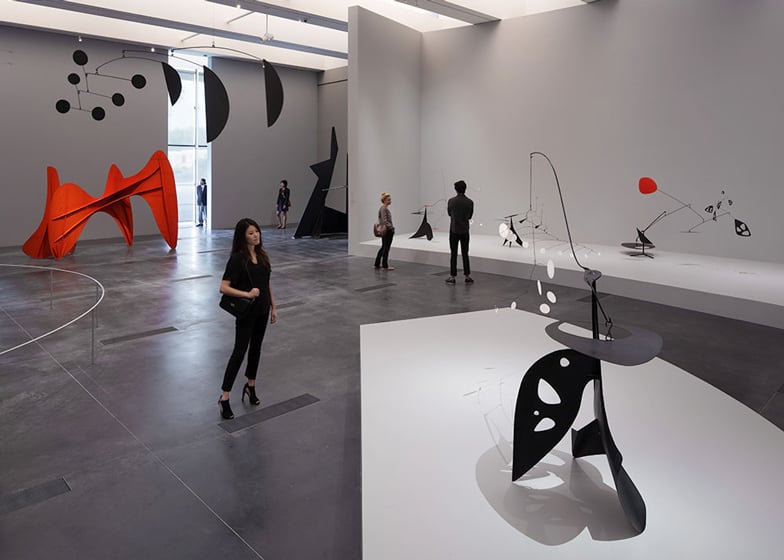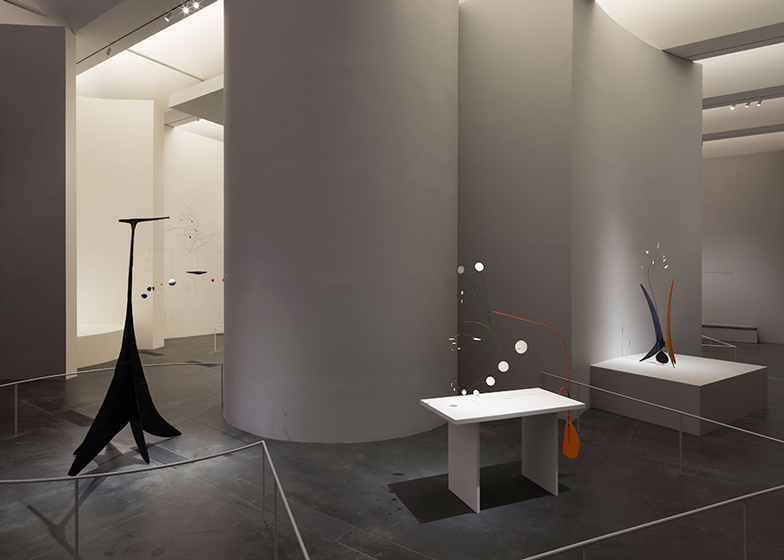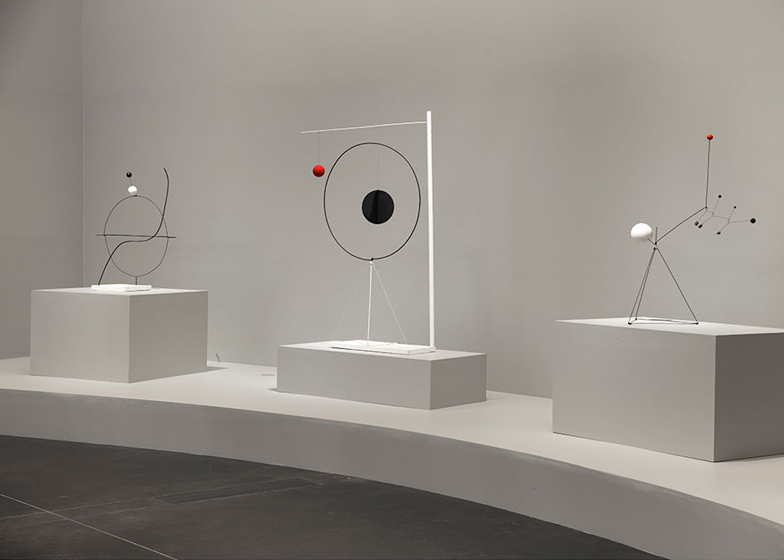Frank Gehry has created curvy alcoves and boxy podiums for this exhibition dedicated to the work of American sculptor Alexander Calder, at the Los Angeles County Museum of Art (LACMA) (+ slideshow).
The show, entitled Calder and Abstraction: From Avant-Garde to Iconic, displays nearly 50 works created by the artist up until his death in 1976, including mobiles, sculptures and maquettes for larger outdoor pieces.
As a personal fan of Calder, Frank Gehry based his scenography design on a 1964 retrospective of the artist's work at the Guggenheim Museum in New York.
Curving partitions with crisp edges provide a backdrop to the kinetic sculptures – flat pieces of painted metal connected to wires that move delicately in the air, propelled by motors or air currents.
Most of the objects also sit on white podiums, which were created with different shapes and heights to emphasise the unique details and shadows of each piece.
Walls transition from white to grey and pale blue, contrasting with the dark grey floor, while slender railings help to guide visitors through the space.
The exhibition continues at LACMA until 27 July. It is the latest in an ongoing series of spaces designed for the gallery by Gehry, including last year's Ken Price show and a 1968 exhibition for sculptor Billy Al Bengston.
All photography is by Fredrik Nilsen, courtesy of the Calder Foundation.
Scroll down for a brief overview of the exhibition from LACMA:
Calder and Abstraction: From Avant-Garde to Iconic
One of the most important artists of the twentieth century, Alexander Calder revolutionised modern sculpture. Calder and Abstraction: From Avant-Garde to Iconic, with significant cooperation from the Calder Foundation, explores the artist's radical translation of French Surrealist vocabulary into American vernacular.
His most iconic works, coined mobiles by Marcel Duchamp, are kinetic sculptures in which flat pieces of painted metal connected by wire move delicately in the air, propelled by motors or air currents.
His later stabiles are monumental structures, whose arching forms and massive steel planes continue his engagement with dynamism and daring innovation.
Although this will be his first museum exhibition in Los Angeles, Calder holds a significant place in LACMA’s history: the museum commissioned Three Quintains (Hello Girls) for its opening in 1965. The installation was designed by architect Frank Gehry.

